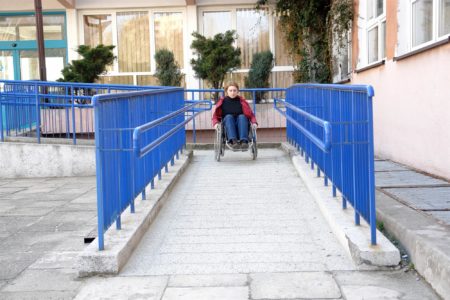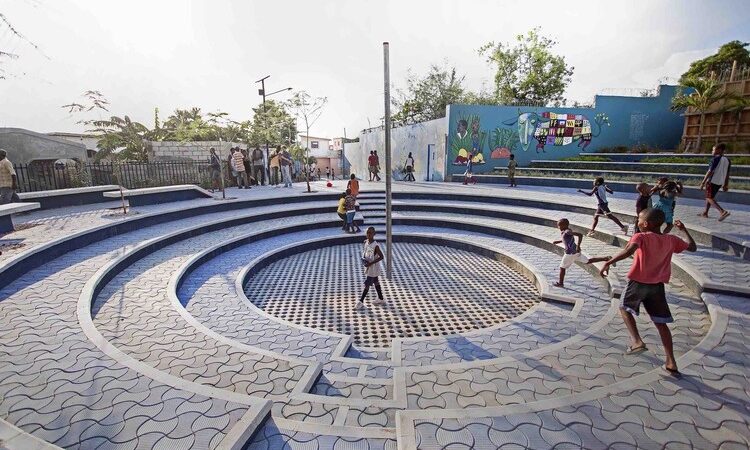The Gentle Ascent: How Proper ADA Ramp Slopes Create True Independence

The concept of a ramp seems simple enough: an inclined plane connecting two different levels. Yet, in the realm of accessibility, the design and execution of these seemingly basic structures hold immense power. A properly constructed ramp, adhering to the stringent guidelines set forth by the Americans with Disabilities Act (ADA), is far more than just a pathway. It is a fundamental key to unlocking true independence, transforming barriers into gateways for individuals with mobility challenges, parents with strollers, or anyone navigating varied terrains. The “gentle ascent” that a correctly sloped ADA ramp provides is not just about physical access; it’s about dignity, inclusion, and the freedom to participate fully in public life.
For too long, architectural design often overlooked the diverse needs of the population. Steps, curbs, and uneven surfaces were commonplace, inadvertently creating a world of inaccessible spaces. The ADA ramp slopes, enacted to ensure equal opportunities for people with disabilities, brought about a transformative shift, mandating that public and commercial spaces be accessible to all. Among its most impactful provisions are those governing ramp constructions, recognizing that the slope of an incline directly dictates its usability and safety.
The Path to Participation: Opening Up the World
The cumulative effect of properly sloped ramps throughout a community is profound. They become literal pathways to greater participation in civic, commercial, and social life.
For an individual who uses a wheelchair, navigating a city without accessible ramps is akin to encountering a continuous series of insurmountable walls. Every curb becomes a barrier, every set of steps a roadblock. Proper ramps, however, dismantle these physical obstacles, allowing access to businesses, public transportation, parks, cultural institutions, and educational facilities. This unrestricted movement is not just about convenience; it is about access to employment opportunities, social engagements, healthcare appointments, and the countless daily interactions that form the fabric of society. It transforms dependence into independence, allowing individuals to pursue their goals and live fulfilling lives without being sidelined by architectural design.
Safety First: Minimizing Risks and Ensuring Confidence
The safety aspect of proper ramp slopes cannot be overstated. A ramp that is too steep or lacks adequate features poses significant risks. Beyond the primary slope, ADA guidelines also address critical safety elements like:
- Handrails: Providing stable support for individuals to pull themselves up or slow their descent.
- Edge Protection: Curbs or railings along the sides of the ramp prevent wheelchairs or other mobility devices from accidentally rolling off.
- Landing Areas: Flat, level platforms at the top and bottom of ramps, and at turns, provide crucial resting points and space for maneuvering, preventing falls and allowing for safe transitions.
- Surface Texture: Non-slip surfaces are vital, especially in wet or icy conditions, to prevent slips and falls.
These combined features, working in concert with the optimal slope, create an environment where individuals can navigate with confidence, reducing the fear of accidents and empowering them to move freely and safely.
The Long-Term Impact: Health, Well-being, and Economic Benefit
The benefits of proper ADA ramp slopes extend far into the long term, affecting not just individuals but entire communities. From a personal health perspective, accessible environments encourage physical activity and engagement, which are crucial for overall well-being. For those with mobility challenges, avoiding strenuous and risky inclines reduces the likelihood of injuries, strains, and exacerbation of existing conditions. This directly contributes to better long-term health outcomes and a higher quality of life.
Economically, accessible infrastructure broadens the customer base for businesses and services. When a store or restaurant is easily accessible to everyone, it attracts more patrons. Similarly, accessible workplaces open up opportunities for a wider talent pool, boosting economic participation and contributing to a more diverse and productive workforce. Investing in proper ramp construction is not just expenditure; it’s an investment in the social and economic vitality of a community.
Beyond the Blueprint: A Symbol of Progress
The gentle ascent provided by a proper ADA ramp slope is more than a technical specification; it is a powerful symbol. It represents a society’s commitment to equality, dignity, and the fundamental right of every individual to navigate their world without unnecessary barriers. It signifies progress, acknowledging past oversights and actively working towards a more inclusive future.







